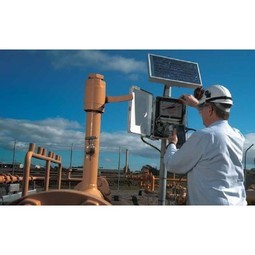公司规模
Mid-size Company
地区
- America
国家
- United States
产品
- CrowdStrike Falcon
- Falcon OverWatch
- Falcon X
- Falcon Device Control
- Falcon Discover
技术栈
- AWS
- Linux
- Microsoft Windows
- Apple Mac
实施规模
- Enterprise-wide Deployment
影响指标
- Cost Savings
- Customer Satisfaction
- Productivity Improvements
技术
- 网络安全和隐私 - 云安全
- 网络安全和隐私 - 端点安全
- 网络安全和隐私 - 网络安全
适用行业
- 医疗保健和医院
- 公用事业
适用功能
- 商业运营
- 质量保证
服务
- 网络安全服务
- 系统集成
关于客户
Inductive Automation is a technology company based in Folsom, California, specializing in the development of industrial supervisory control and data acquisition (SCADA) software. The company serves a wide range of global brands, including Airbus, Coca-Cola, GlaxoSmithKline, Johnson & Johnson, Kraft, Shell, and Unilever, as well as numerous public sector utilities. Inductive Automation's flagship product, Ignition, is a universal industrial automation application platform that integrates multiple systems into a single point of monitoring and control. The company plays a crucial role in managing industrial operations such as manufacturing, wastewater, and nuclear power, providing solutions that integrate with various ecosystems adopted by its customers. With a complex IT environment and a large percentage of employees in skilled technical roles, Inductive Automation is committed to ensuring the security of its systems, which are vital to the world's most critical sectors.
挑战
Inductive Automation faced significant challenges in ensuring the robustness and security of its software used in critical industry operations. The increasing vulnerabilities brought about by Industry 4.0 and IoT, coupled with complex IT systems dominated by developers, posed a significant burden on system resources. The company's existing endpoint security was fragmented, leading to inefficiencies and increased resource demands. Additionally, the rapid growth of Inductive Automation necessitated a security solution that could scale and adapt to its evolving business model. The company needed to address the demands created by endpoint protection software on computer resources, as the development of sophisticated SCADA applications required substantial processing power. The existing security package produced many false positives, wasting time and effort for the security team.
解决方案
Inductive Automation adopted a portfolio of CrowdStrike solutions to enhance the security of its data, systems, and software used in critical industry operations. The company replaced several existing products with the CrowdStrike Falcon platform, which provided comprehensive security protection for both on-premises and cloud environments. The Falcon OverWatch managed threat hunting service was selected to augment the in-house security team and address the challenge of attracting additional skilled staff. The CrowdStrike Falcon platform offered minimal CPU demand and negligible impact on system performance, allowing developers to work without disruptions. The platform's comprehensive nature reduced operational costs by consolidating multiple security functions into a single agent, including USB and firewall control, vulnerability management, antivirus, and forensics. Tools like Falcon X were leveraged for detecting and managing suspicious links or files, providing valuable insights into potential threats.
运营影响
数量效益

Case Study missing?
Start adding your own!
Register with your work email and create a new case study profile for your business.
相关案例.

Case Study
IoT Solutions for Smart City | Internet of Things Case Study
There were several challenges faced: It is challenging to build an appliance that can withstand a wide range of voltage fluctuations from as low at 90v to as high as 320v. Since the device would be installed in remote locations, its resilience was of paramount importance. The device would have to deal with poor network coverage and have the ability to store and re-transmit data if networks were not available, which is often the case in rural India. The device could store up to 30 days of data.

Case Study
Automation of the Oguz-Gabala-Baku water pipeline, Azerbaijan
The Oguz-Gabala-Baku water pipeline project dates back to plans from the 1970’s. Baku’s growth was historically driven by the booming oil industry and required the import of drinking water from outside of the city. Before the construction of the pipeline, some 60 percent of the city’s households received water for only a few hours daily. After completion of the project, 75 percent of the two million Baku residents are now served around the clock with potable water, based on World Health Organization (WHO) standards. The 262-kilometer pipeline requires no pumping station, but uses the altitude differences between the Caucasian mountains and the capital to supply 432,000 m³/d to the Ceyranbatan water reservoir. To the people of Baku, the pipeline is “the most important project not only in 2010, but of the last 20 years.”

Case Study
GPRS Mobile Network for Smart Metering
Around the world, the electricity supply industry is turning to ‘smart’ meters to lower costs, reduce emissions and improve the management of customer supplies. Smart meters collect detailed consumption information and using this feedback consumers can better understand their energy usage which in turn enables them to modify their consumption to save money and help to cut carbon emissions. A smart meter can be defined in many ways, but generally includes an element of two-way communication between the household meter and the utility provider to efficiently collect detailed energy usage data. Some implementations include consumer feedback beyond the energy bill to include online web data, SMS text messages or an information display in consumers’ premises. Providing a cost-effective, reliable communications mechanism is one of the most challenging aspects of a smart meter implementation. In New Zealand, the utilities have embraced smart metering and designed cost effective ways for it to be implemented. The New Zealand government has encouraged such a move to smart metering by ensuring the energy legislation is consistent with the delivery of benefits to the consumer while allowing innovation in this area. On the ground, AMS is a leader in the deployment of smart metering and associated services. Several of New Zealand’s energy retailers were looking for smart metering services for their residential and small business customers which will eventually account for over 500,000 meters when the multi-year national deployment program is concluded. To respond to these requirements, AMS needed to put together a solution that included data communications between each meter and the central data collection point and the solution proposed by Vodafone satisfied that requirement.

Case Study
NB-IoT connected smart meters to improve gas metering in Shenzhen
Shenzhen Gas has a large fleet of existing gas meters, which are installed in a variety of hard to reach locations, such as indoors and underground, meaning that existing communications networks have struggled to maintain connectivity with all meters. The meter success rate is low, data transmissions are so far unstable and power consumption is too high. Against this background, Shenzhen Gas, China Telecom, Huawei, and Goldcard have jointly trialed NB-IoT gas meters to try and solve some of the challenges that the industry faces with today’s smart gas meters.

Case Study
Hospital Inventory Management
The hospital supply chain team is responsible for ensuring that the right medical supplies are readily available to clinicians when and where needed, and to do so in the most efficient manner possible. However, many of the systems and processes in use at the cancer center for supply chain management were not best suited to support these goals. Barcoding technology, a commonly used method for inventory management of medical supplies, is labor intensive, time consuming, does not provide real-time visibility into inventory levels and can be prone to error. Consequently, the lack of accurate and real-time visibility into inventory levels across multiple supply rooms in multiple hospital facilities creates additional inefficiency in the system causing over-ordering, hoarding, and wasted supplies. Other sources of waste and cost were also identified as candidates for improvement. Existing systems and processes did not provide adequate security for high-cost inventory within the hospital, which was another driver of cost. A lack of visibility into expiration dates for supplies resulted in supplies being wasted due to past expiry dates. Storage of supplies was also a key consideration given the location of the cancer center’s facilities in a dense urban setting, where space is always at a premium. In order to address the challenges outlined above, the hospital sought a solution that would provide real-time inventory information with high levels of accuracy, reduce the level of manual effort required and enable data driven decision making to ensure that the right supplies were readily available to clinicians in the right location at the right time.

Case Study
British Gas Modernizes its Operations with Innovative Smart Metering Deployment
The UK government has mandated that smart meters are rolled out as standard across Great Britain by end of 2020, and this roll-out is estimated to create £14 billion in net benefits to the UK in consumer energy savings and lower energy generation demand, according to the Oxford Economics report, “The Value of Smart Metering to Great Britain.” While smart-metering systems have been deployed in many countries, the roll-out in Great Britain is unique because it is led by energy retailers, who have responsibility for the Electricity and Gas meters. The decision to have a retailer-led roll out was made by DECC (Department of Energy and Climate Change) to improve customer experience and drive consumer benefits. It has also led to some unique system-level requirements to support the unique local regulatory model.







